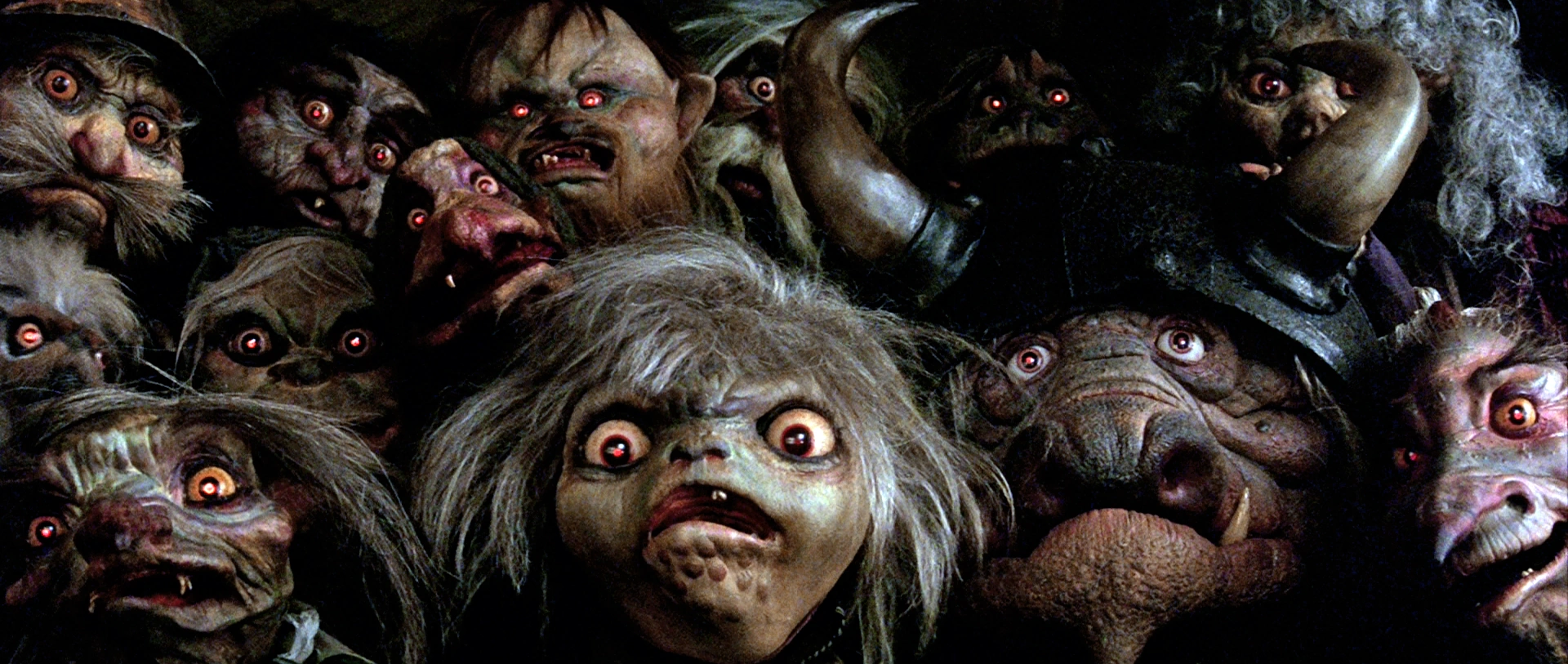I’m tired of generic monsters. I mean, how many times have you
heard, “You see four goblins…” or the like? Is that interesting? Is that
engaging? Not really. So how do we make our sentient monsters different? How do
we make them pop? Today, I’m going to discuss a couple of easy ideas that will
immediately give your monsters character and definition, and it’s not all that
difficult.
The biggest problem with encountering 2d6 generic goblins is that
they exist in a vacuum. Sure, the GM might say, "But these goblins aredifferent! They are from the Chickhead Tribe. Those others were from the Doghead Tribe,” but that is a copout if
not one player even noticed. I’m not that the GM should be on the nose about
monster backstory or that every monster needs a tonne of backstory, but they do
need flavor.
The easiest way to impart some flavor on your monsters is to give
them something unique. Maybe the Chickenhead Tribe has a bunch of chicken heads
hanging around their necks. The GM should be sure to mention this every single
time the players encounter the Chickenhead Tribe, though, or it loses its
meaning. There is power in ritual. More than that, it promotes player agency.
You aren’t saying the monster is definitely in the Chickenhead Tribe, but it’s
a safe assumption. And on top of that, the first few times the players
encounter the Chickenhead Tribe, they have the clues necessary to draw
conclusions about the monsters’ relationships to each other. Agency. Get some.
The next interesting way you can give your monsters a unifying
theme is through weaponry. I’ll admit, this is hugely inspired by Better Living Through Polearms over
at Jeff’s Gameblog, but he has a great idea. It’s both realistic and interesting
to give groups of monsters with similar backgrounds similar armaments. Also,
you can show relationships between monsters based on how they arm themselves.
Maybe the Chickenhead Tribe uses forward-curved swords that look like big
kukris. Cool! Are the stats any different from a normal sword? Maybe, maybe
not. But they’re different now, and in a way the players really care about.
Yet another method of differentiating your monsters is through speech
patterns. Come up with a couple odd sayings or maybe an unnatural sounding but consistent spin on basic syntax. The
most obnoxious example I can think of here is Jar-Jar Binx. Don’t take it that far.
Please. Your players are begging you. But no one complains about Yoda’s weird
syntax. Mock it they do, but complain? Nope. It could even be as simple as how
they stall for time verbally – e.g., clicking their tongues instead of saying “ummm”.
Something. Anything to differentiate them. This isn’t calculus. You don’t need
power-chain rule. Just be creative.
Maybe one tribe of monsters doesn’t like another. Maybe they use
pejoratives for other tribes. Maybe the Budongs aren’t monsters or a different
subspecies of goblin. Maybe that’s just what the Chickenheads call the Dogheads,
and it means “mud-faced toe-sucker”. The players may never realize that, but it’s
there under the surface. It’s something the players might hear a goblin say
that immediately says, “That goblin said ‘budong’. He must be a Chickenhead.
Don’t they have a beef with the Dogheads?” And for that matter, nothing says
that the names you give monsters – or that monsters call each other – is even
the correct word for that monster. Try that on for size. Maybe “goblin” is
slang for “half-stack” and the orcs use it to annoy the goblins. And it stuck.
It is important not to go overboard with these things, though.
Just pick one or two and let it develop naturally from there. It’s something
players can key in on that says, “But these goblins are different!” in a
meaningful way. If you throw too much at the players early on, they might not
know what to key in on. Limiting the differentness just a touch will help them
pay attention to what you want them to notice. So give your monsters some
individuality and help
them pop. That way it’ll be your players saying, “Wait, but these goblins are
different!”


No comments :
Post a Comment